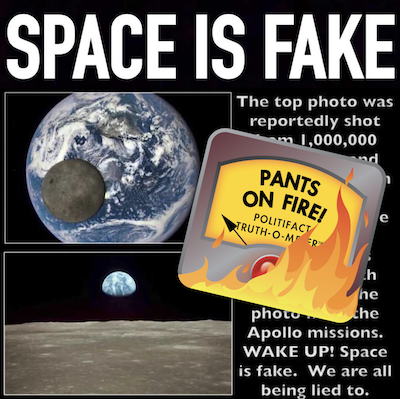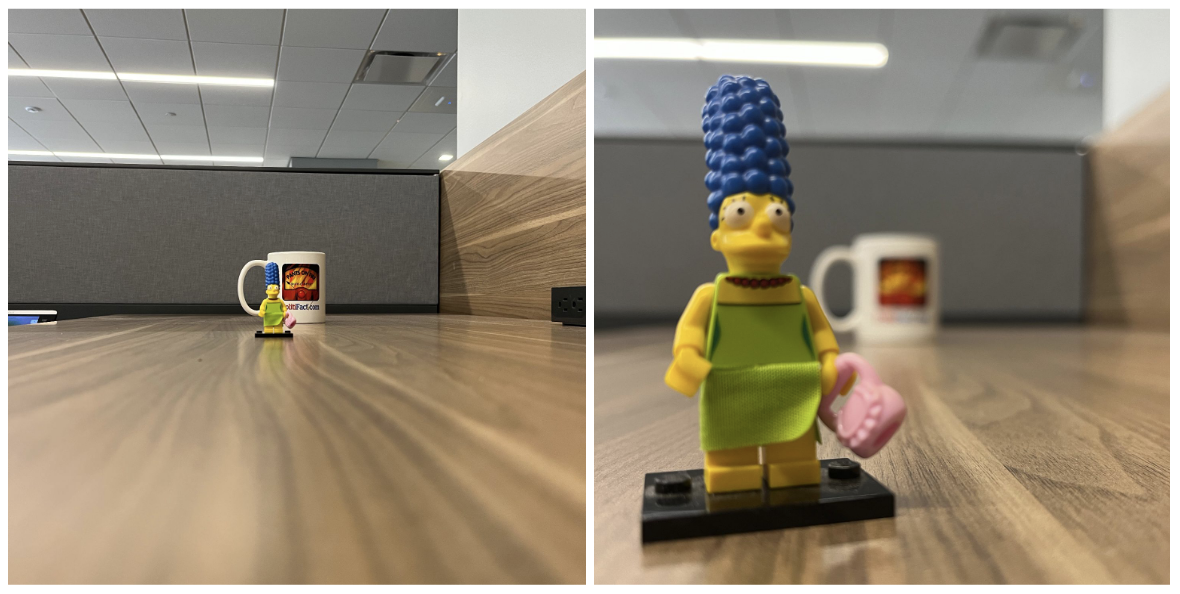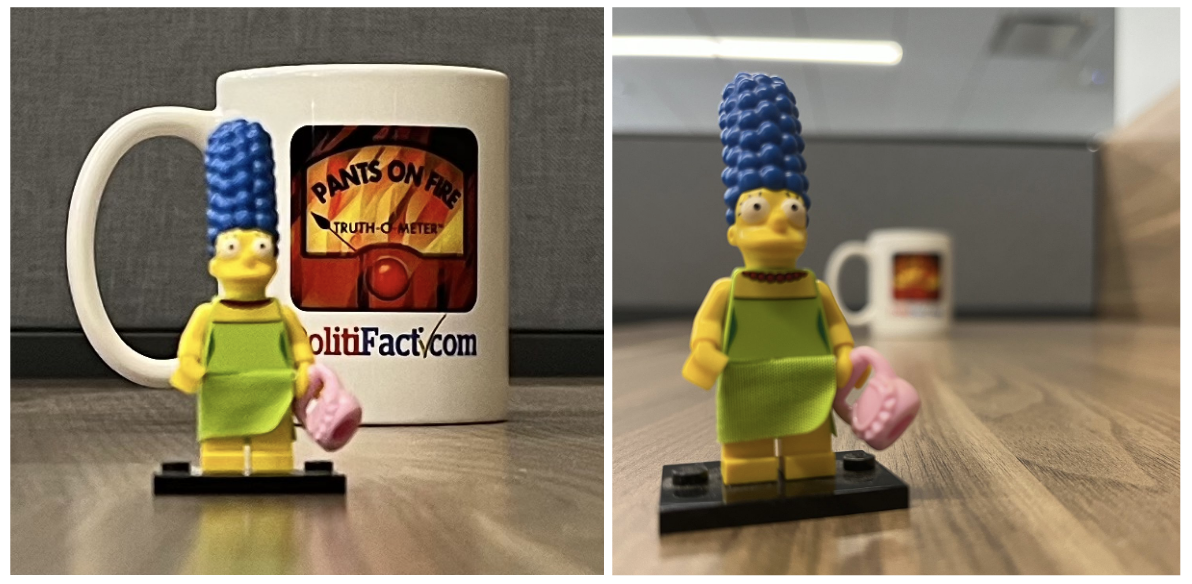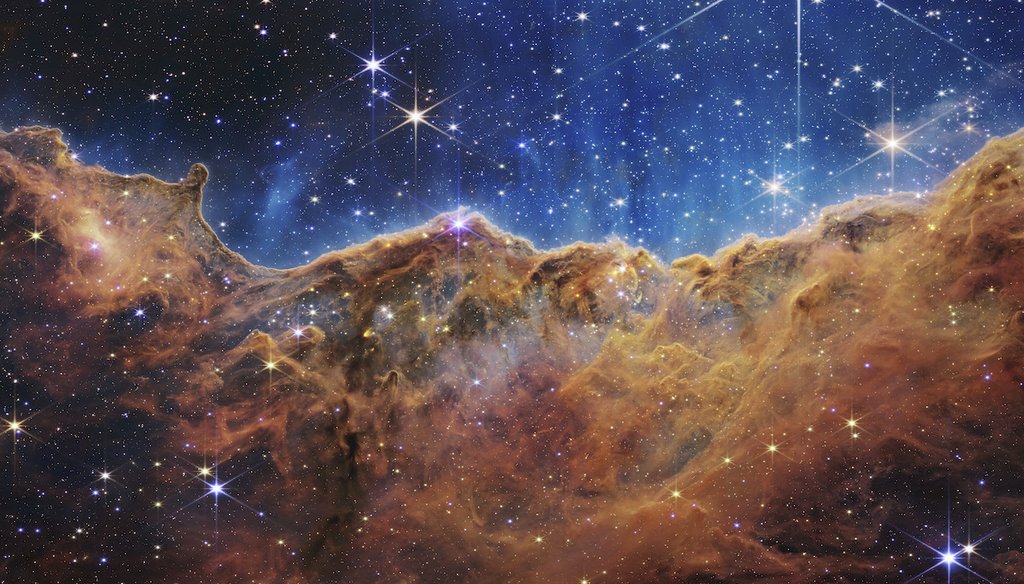

Our only agenda is to publish the truth so you can be an informed participant in democracy.
We need your help.


This image released by NASA on Tuesday, July 12, 2022, was captured on the James Webb Space Telescope and shows the edge of a nearby, young, star-forming region NGC 3324 in the Carina Nebula. (NASA, ESA, CSA, and STScI via AP)
The size discrepancy in two NASA photos of the moon and Earth is because of a difference in perspective. The image taken from farther away is zoomed in, making the Earth look larger.
Using a mug and a Lego figurine, we show how this "evidence" is just a trick in perspective achievable with any camera.
With the release of new colorful bowling-alley-carpetesque photos from the James Webb Space Telescope, it is official. Space is cool again.
But for some people, such out-of-this-world images serve as evidence that, as one Instagram post claimed, "SPACE IS FAKE."
That July 20, 2022, post relied on old NASA images to suggest that the varying sizes of the moon and Earth in relation to each other prove space is a myth.
"Show me the angular size of something that gets smaller the CLOSER you get to it … " read the caption, implying that because Earth appears smaller than the moon in the second photo, it must be inauthentic.

(Screenshot from Instagram)
The post, which comes from an account that has shared a number of false claims suggesting the earth is flat, was flagged as part of Facebook’s efforts to combat false news and misinformation on its News Feed. Instagram is owned by Facebook. (Read more about our partnership with Facebook.)
Here’s why the post is wrong.
The top photo was captured by a camera aboard the Deep Space Climate Observatory (DSCOVR) satellite that orbits about 1 million miles from Earth. NASA released the image in 2015 and included it as part of an animation that stitched together several still photos showing the far side of the moon as it crossed in front of Earth.
The second photo dates back to July 20, 1969, when three American astronauts on the Apollo 11 mission landed on the moon. That image was indeed, as the post says, taken about 760,000 miles closer to Earth than was the 2015 image from the DSCOVR satellite.
Although the two photos are not digitally altered, they do not prove that outer space is fake. The size discrepancy of the Earth in the two photos is a trick of perspective that can easily be replicated with any camera and any two different-sized objects.
Using knickknacks from around PolitiFact’s newsroom, we illustrated why the Earth looks big in one photo and small in the other.
Our two objects?
A vintage PolitiFact mug (Earth) and a lego Marge Simpson (the moon).

(On the left is a side-by-side object comparison of Marge and the mug. The image on the right shows the distance between the objects for our photos.)
After placing our objects about a foot apart, we took two pictures — one from far away, and one up close.

(On the left is Marge and the mug captured from several feet away. On the right are the same objects, but the photo was taken from a distance closer to the mug and to Marge.)
From far away, the mug looks small, and Marge looks smaller. As the camera gets closer in the second image, right next to Marge, she looks much larger than the mug, but still, the mug is larger than in the first photo because the camera is closer to it.
But if you zoom in on the objects in the far-away photo, as was likely done with the 2015 NASA image of Earth, the mug appears quite large. It looks much larger than the second image, which was taken from a distance that is much closer to the mug (and also Marge).

(On the left is the far-away image zoomed in on the objects. On the right is the same image we shared above.)
So how does an object appear smaller the closer you get to it? This is how. It is a trick of the camera, not evidence that outer space is fake.
There are many more reasons we know outer space is not fake. Official space exploration began in 1961 when cosmonaut Yuri Gagarin became the first human in space. Since then, more than 600 people have followed in his gravity-free footsteps. Several rovers have been sent to explore the surface of the moon and Mars bringing back rock specimens to distribute to researchers around the globe. Want to see for yourself? Check out a live feed from the International Space Station.
Humans have been studying the night sky and the universe beyond since the dawn of mankind, and evidence of space began long before space travel.
In the seventh century B.C., ancient Babylonians were tracking and predicting the movement of planets and constellations. Ancient Greeks used geometry to measure the earth’s circumference and the distance to the moon and to understand orbits. Now we have governmental agencies, astrophysicists, and astronomers dedicated to the study of space.
The statement that this image shows "space is fake" is inaccurate and ridiculous. That’s our definition for Pants on Fire!
RELATED: The James Webb Space Telescope and the images it has taken are real
The New York Times, "Webb Telescope Reveals a New Vision of an Ancient Universe
Original Post," July 12, 2022
Instagram Post, (archived), July 20, 2022
NASA, "From a Million Miles Away, NASA Camera Shows Moon Crossing Face of Earth," Aug. 5, 2015
NASA, "DSCOVR," July 24, 2019
NASA, "Apollo 11 Mission Image - View of Moon Limb, with Earth on the Horizon," June 28, 2018
National Archives, "Space Exploration," Aug. 21, 2016
Britannica, "Ancient Greece - astronomy," accessed July 28, 2022
New York Times, "More than 600 human beings have now been to space," Nov. 10, 2021
Mashable, "Every rover, ranked by distance traveled on the moon and Mars," Aug. 14, 2021
NASA, "NASA's Perseverance Initiates Remarkable Sample Return Mission," Oct.12, 2021
NASA, "Lunar Rocks and Soils from Apollo Missions," March 31, 2022
NASA, "ISS High Definition Live Streaming Video of the Earth (HDEV)," accessed July 28, 2022
Britannica, "History of astronomy," accessed July 28, 2022
NASA website, accessed July 28, 2022
In a world of wild talk and fake news, help us stand up for the facts.
